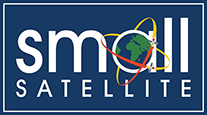Session
Session V: Propulsion-Enterprise
Location
Salt Palace Convention Center, Salt Lake City, UT
Abstract
The Steam Thruster One is an electro-thermal propulsion system capable of delivering a thrust level up to 20 mN, using 20 W of power and reaching a total impulse of about 1200 Ns in its 2U configuration. The system operates solely on low-pressure water, ensuring complete safety for integration and operations both on the ground and in space. The propulsion cycle involves converting liquid water into superheated steam, which is then expanded through a nozzle to generate thrust.
The propulsion system was tested in space in Q3 2023 and Q2 2024, where it successfully demonstrated short propulsion manoeuvres. However, for extended thrust applications, a dedicated ground functional test campaign was conducted to simulate a bigger orbit correction, and specifically a perigee-raising burn.
This manoeuvre scenario is directly relevant to the upcoming Artemis II mission, in which SteamJet’s propulsion system will be integrated aboard K-RadCube, a 12U CubeSat developed by Nara Space Technology. The satellite will be deployed into a highly elliptical orbit, where insufficient thrust capability would result in atmospheric re-entry, making timely and efficient orbit-raising manoeuvres essential for mission success. Electric propulsion despite being efficient, would lack the required thrust-to-time ratio for this application, while cold gas systems suffer from low specific impulse, making both impractical. Typically, such manoeuvres would rely on chemical propulsion for rapid orbital adjustments. However, this test demonstrated that the Steam Thruster One, operating on superheated steam from low-pressure water, can achieve the same objective. Providing an average thrust of 17.4 mN for 11 hours and 30 minutes, the system successfully generated the required delta-V to raise the perigee within the designated timeframe, confirming water-based propulsion as a viable and efficient alternative to chemical systems for time-sensitive orbit corrections.
This paper provides a detailed analysis of the functional testing performed, including the experimental setup, results, and lessons learned. The findings contribute to the advancement of water-based propulsion systems and their role in efficient, sustainable, and rapid-response manoeuvres for Small Satellites.
Document Type
Event
Extended Testing of a Steam-Powered Propulsion System for Rapid-Orbit Corrections: A Viable Alternative to Chemical Propulsion
Salt Palace Convention Center, Salt Lake City, UT
The Steam Thruster One is an electro-thermal propulsion system capable of delivering a thrust level up to 20 mN, using 20 W of power and reaching a total impulse of about 1200 Ns in its 2U configuration. The system operates solely on low-pressure water, ensuring complete safety for integration and operations both on the ground and in space. The propulsion cycle involves converting liquid water into superheated steam, which is then expanded through a nozzle to generate thrust.
The propulsion system was tested in space in Q3 2023 and Q2 2024, where it successfully demonstrated short propulsion manoeuvres. However, for extended thrust applications, a dedicated ground functional test campaign was conducted to simulate a bigger orbit correction, and specifically a perigee-raising burn.
This manoeuvre scenario is directly relevant to the upcoming Artemis II mission, in which SteamJet’s propulsion system will be integrated aboard K-RadCube, a 12U CubeSat developed by Nara Space Technology. The satellite will be deployed into a highly elliptical orbit, where insufficient thrust capability would result in atmospheric re-entry, making timely and efficient orbit-raising manoeuvres essential for mission success. Electric propulsion despite being efficient, would lack the required thrust-to-time ratio for this application, while cold gas systems suffer from low specific impulse, making both impractical. Typically, such manoeuvres would rely on chemical propulsion for rapid orbital adjustments. However, this test demonstrated that the Steam Thruster One, operating on superheated steam from low-pressure water, can achieve the same objective. Providing an average thrust of 17.4 mN for 11 hours and 30 minutes, the system successfully generated the required delta-V to raise the perigee within the designated timeframe, confirming water-based propulsion as a viable and efficient alternative to chemical systems for time-sensitive orbit corrections.
This paper provides a detailed analysis of the functional testing performed, including the experimental setup, results, and lessons learned. The findings contribute to the advancement of water-based propulsion systems and their role in efficient, sustainable, and rapid-response manoeuvres for Small Satellites.


